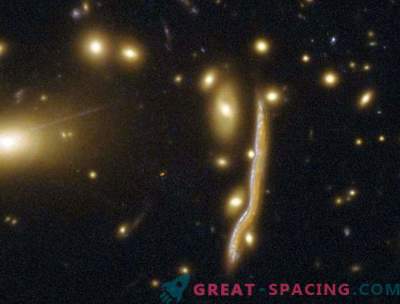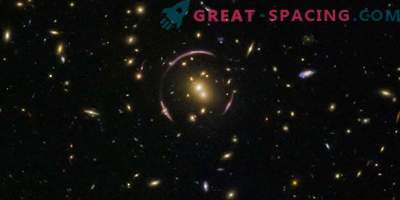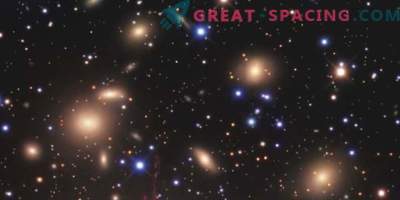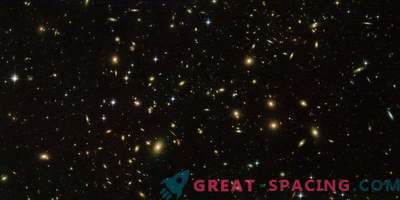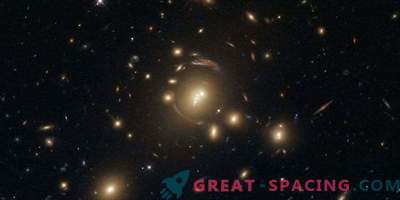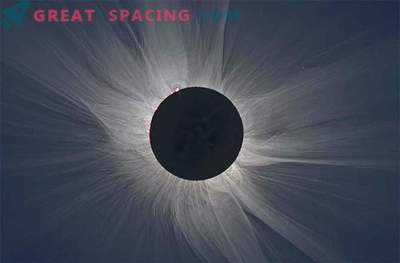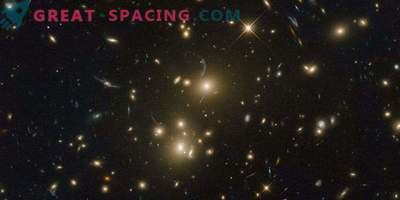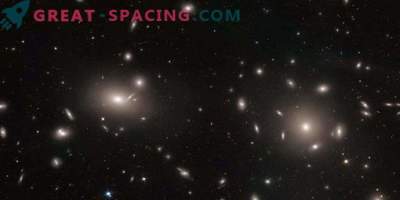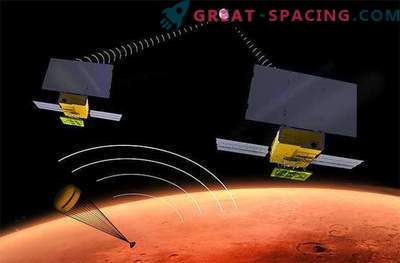
With the help of gravitational lensing, an international group of astronomers was able to find a new Ia-type supernova. An open supernova lens appeared behind the galaxy cluster MOO J1014 + 0038.
The gravitational lensing method uses large objects that bend the background path. With it, you can find a celestial formation, regardless of the type of light emitted. Large galactic clusters are often used as lenses that enhance the brightness of distant targets.
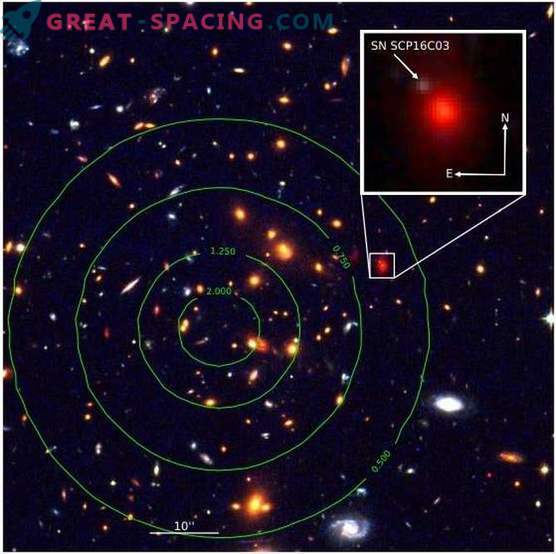
Color image of the central part of MOO J1014 + 0038. The green field displays the contours of the calculated lens enhancement model
That is why scientists used one of these clusters to find a new type Ia supernova. This species appears in binary systems, where one of the objects acts as a white dwarf. Type Ia plays a significant role in the scientific community, because it offers a lot of valuable information about stellar and galactic evolutions. The team had to check 12 large galactic clusters using the Hubble telescope. The candidate was located at redshift 2.22 behind the MOO J1014 + 0038 cluster. Photometric and spectroscopic observations helped determine the nature. The find was identified as SN SCP16C03 — a reddish supernova with the largest redshift.


